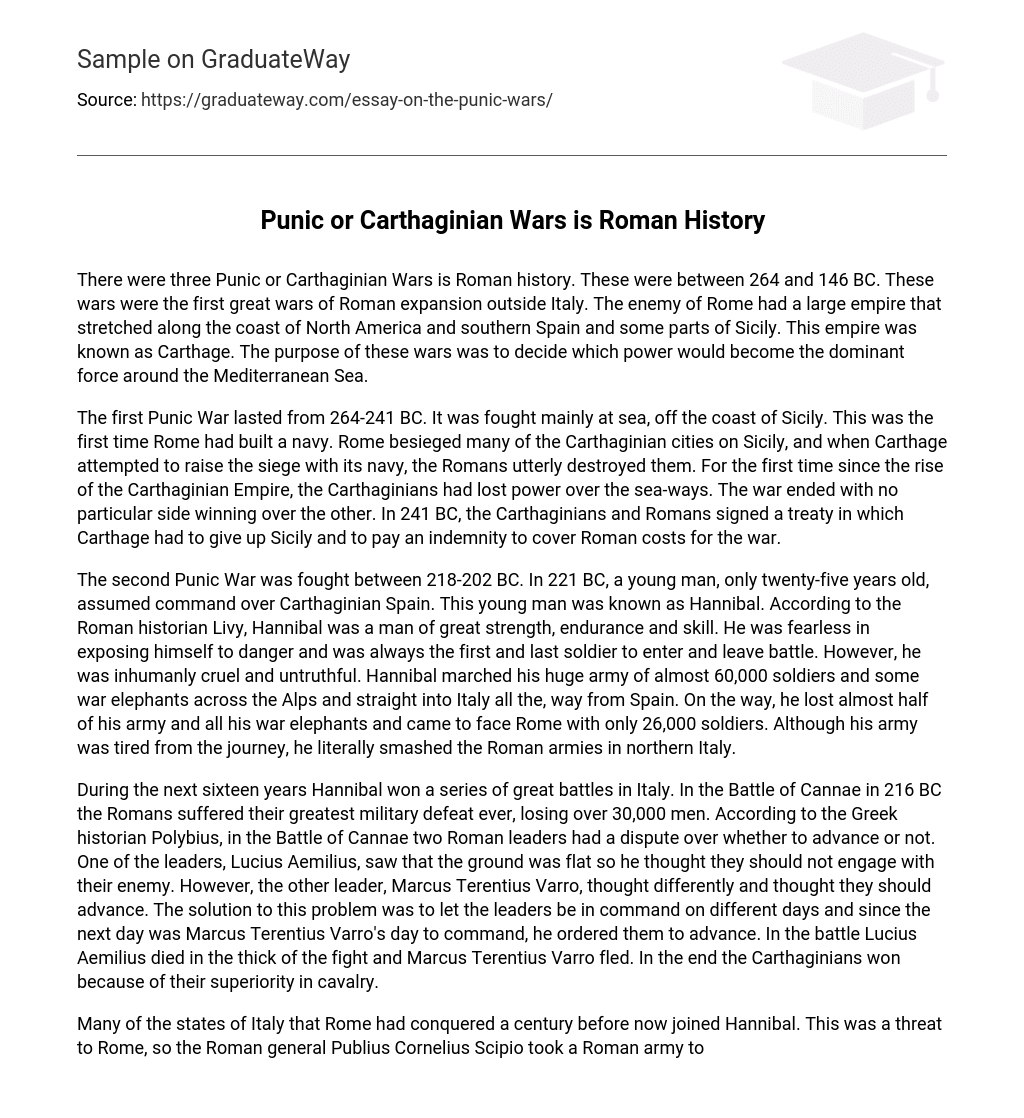The Roman history recorded three wars, known as the Punic or Carthaginian Wars, which occurred between 264 and 146 BC. These wars marked the initial significant conflicts in Roman history that expanded beyond Italy’s borders. Carthage, the opposing force to Rome, possessed a vast empire encompassing the coastal regions of North Africa and southern Spain, along with certain territories in Sicily. The primary objective of these wars was to determine the dominant power in the Mediterranean Sea region.
The first Punic War occurred from 264-241 BC, primarily in the waters near Sicily. This marked Rome’s initial foray into naval warfare. Rome besieged several Carthaginian cities on Sicily, and when Carthage tried to break the siege with its navy, the Romans completely destroyed them. It was the first time that Carthage lost control of the seas since establishing their empire. The conflict ended without a clear winner. In 241 BC, both Carthage and Rome agreed to a treaty that compelled Carthage to surrender Sicily and compensate Rome for its war expenses.
The second Punic War took place from 218-202 BC. In 221 BC, a young man named Hannibal, who was only twenty-five years old, became the leader of Carthaginian Spain. According to the Roman historian Livy, Hannibal was famous for his immense strength, endurance, and skill. He fearlessly exposed himself to danger and always led from the front – being the first into battle and the last to leave. However, he had a reputation for being extremely cruel and deceitful. With his massive army of around 60,000 soldiers and war elephants, Hannibal accomplished an extraordinary feat by crossing the Alps from Spain to Italy. Unfortunately, this journey resulted in him losing nearly half of his army and all of his war elephants; consequently leaving him with only 26,000 soldiers to face Rome’s forces. Despite their exhaustion from the arduous journey through the Alps, Hannibal decisively defeated the Roman armies in northern Italy.
Over the course of the next sixteen years, Hannibal achieved a series of impressive victories in Italy. One notable battle was the Battle of Cannae in 216 BC, which resulted in the Roman army suffering its most devastating defeat ever, with over 30,000 casualties. According to Greek historian Polybius, a disagreement occurred between two Roman leaders during this battle. Lucius Aemilius believed that it was best to avoid engaging with the enemy due to the flat terrain, while Marcus Terentius Varro held a different perspective and advocated for advancing. To resolve their conflict, they decided that each leader would take turns commanding on alternate days. Consequently, as it was Varro’s turn to command the following day, he ordered the Roman forces to proceed. During the battle, Lucius Aemilius died fighting fiercely while Marcus Terentius Varro chose to flee. Ultimately, thanks to their superior cavalry prowess, the Carthaginians emerged triumphant.
A century after Rome conquered many Italian states, those states joined forces with Hannibal, posing a threat to Rome. To counter this, Roman general Publius Cornelius Scipio led an army to North Africa. This prompted Hannibal to return and defend Carthage. In the Battle of Zama in 202 BC, near Carthage, the Romans ultimately achieved victory over Hannibal. The third and final Punic War lasted from 149-146 BC as the Romans feared a resurgence of Carthaginian power. In the end, the Romans decisively defeated the Carthaginians, resulting in Africa becoming a new province of the Roman Empire.
Following the Punic Wars, Rome had established dominance over various territories including Italy, Sicily, a significant portion of Spain and Africa, as well as Greece and the eastern Mediterranean region. It is clear that both Rome and Carthage held powerful empires with skilled armies during this time.





